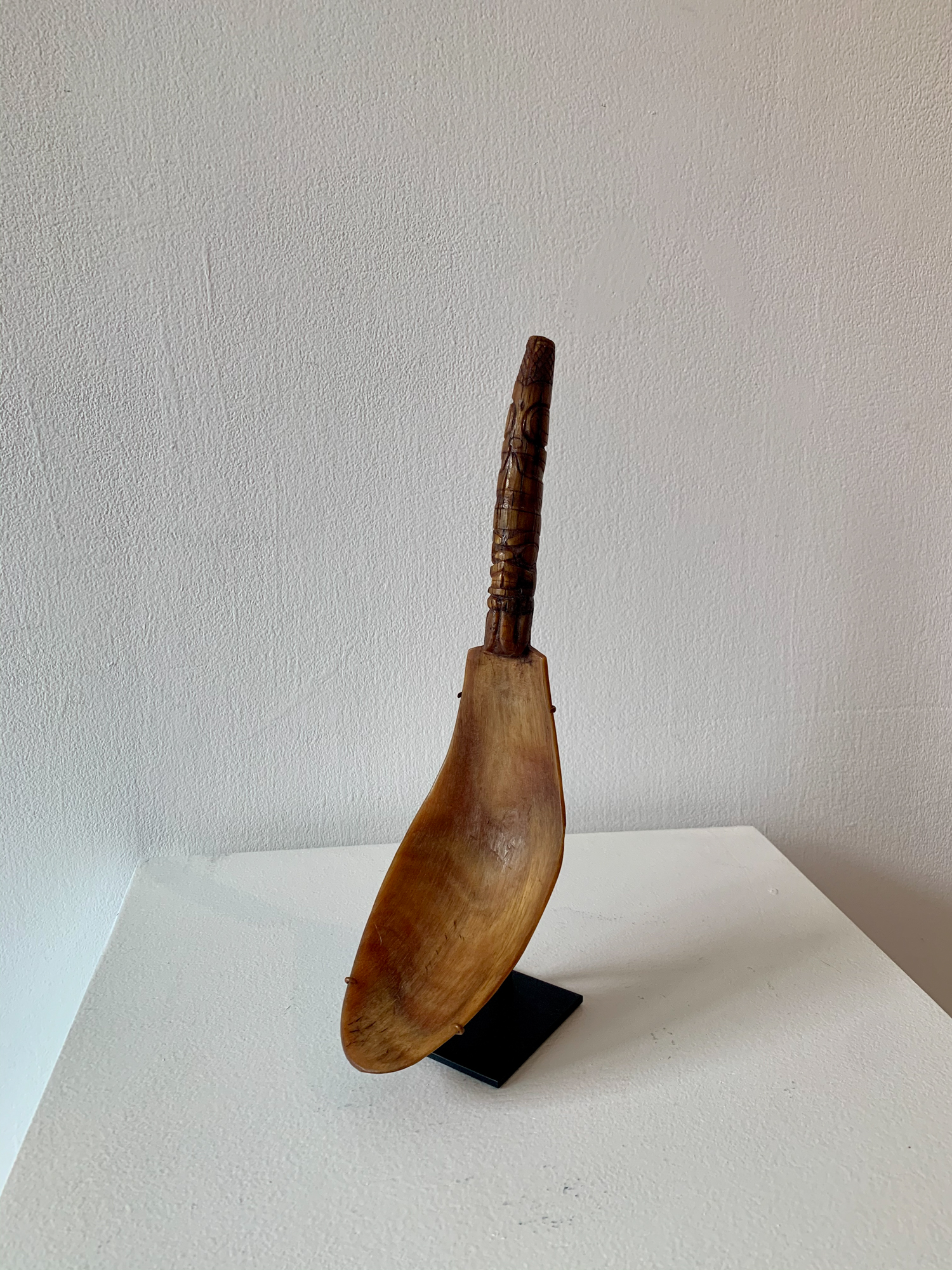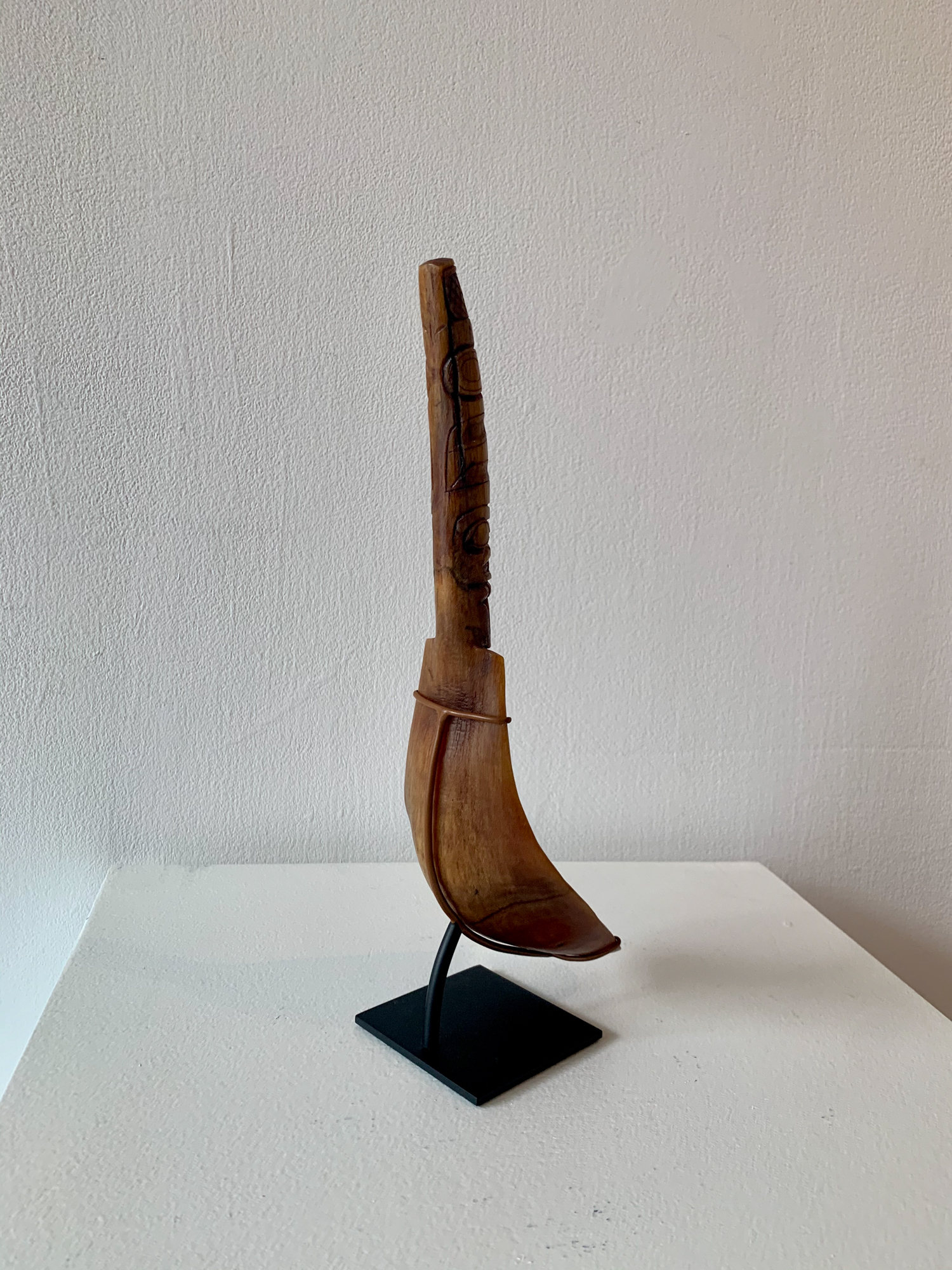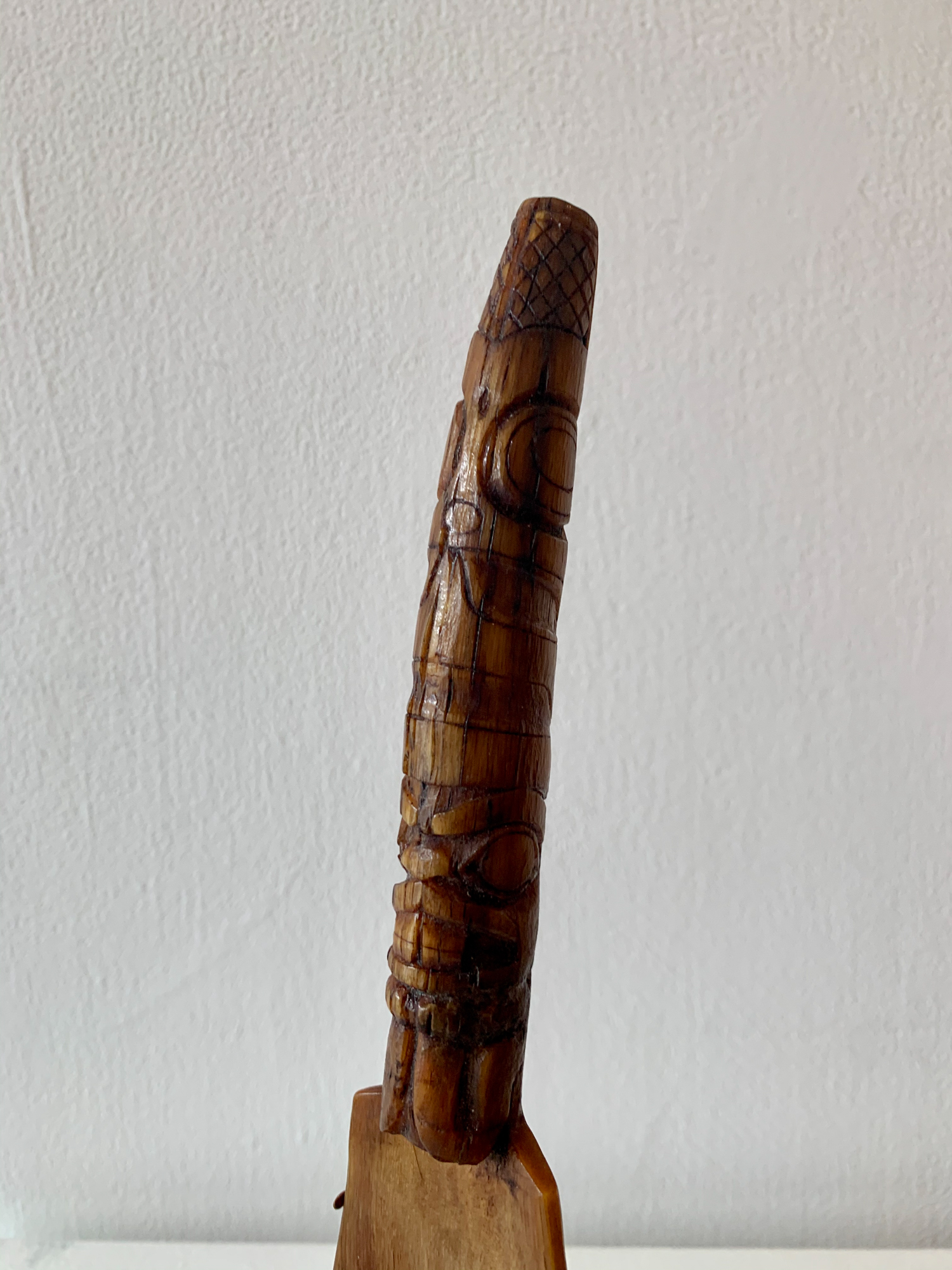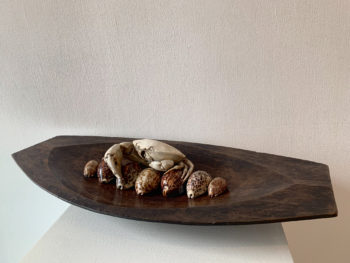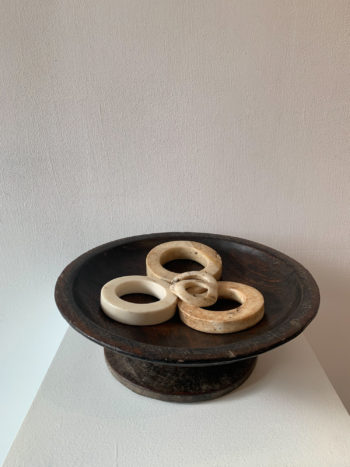Northwest Coast, Canada (Pre-Ban)
Mid 19th Century
3” x 12.5”
Ex Tennessee Collection
Spoons are carved with individually owned and validated crests and emblems many of which tell stories lost to time. A host clan (during a potlatch) desirous of honouring its’ ancestors (via the ceremonial spoon) are able to transfer food to them through a presentation to guest clan members. It is suggested that when the sacred spoon enters the mouth of the ceremonial guest, the ancestor of the host clan also receives the gift of food. This act helps establish an important balance between members of the community. The highly carved spoons of the coast that were made for indigenous use were all pretty serious clan objects and are said to have been treasured heirlooms, such objects are broadly called called at-oow in Tlingit. These large spoons were used very differently than our modern spoons, employed as a kind of portable bowl, larger food stuffs were often picked up out of the spoon with the hands. Horn ladles were typically used for cold or luke-warm food. Hot water would cause them to spring back to their old shape, or flatten out etc. Wooden spoons where used for hot food or oil . Potlatch, ceremonial distribution of property and gifts to affirm or reaffirm social status, as uniquely institutionalized by the American Indians of the Northwest Pacific coast.

